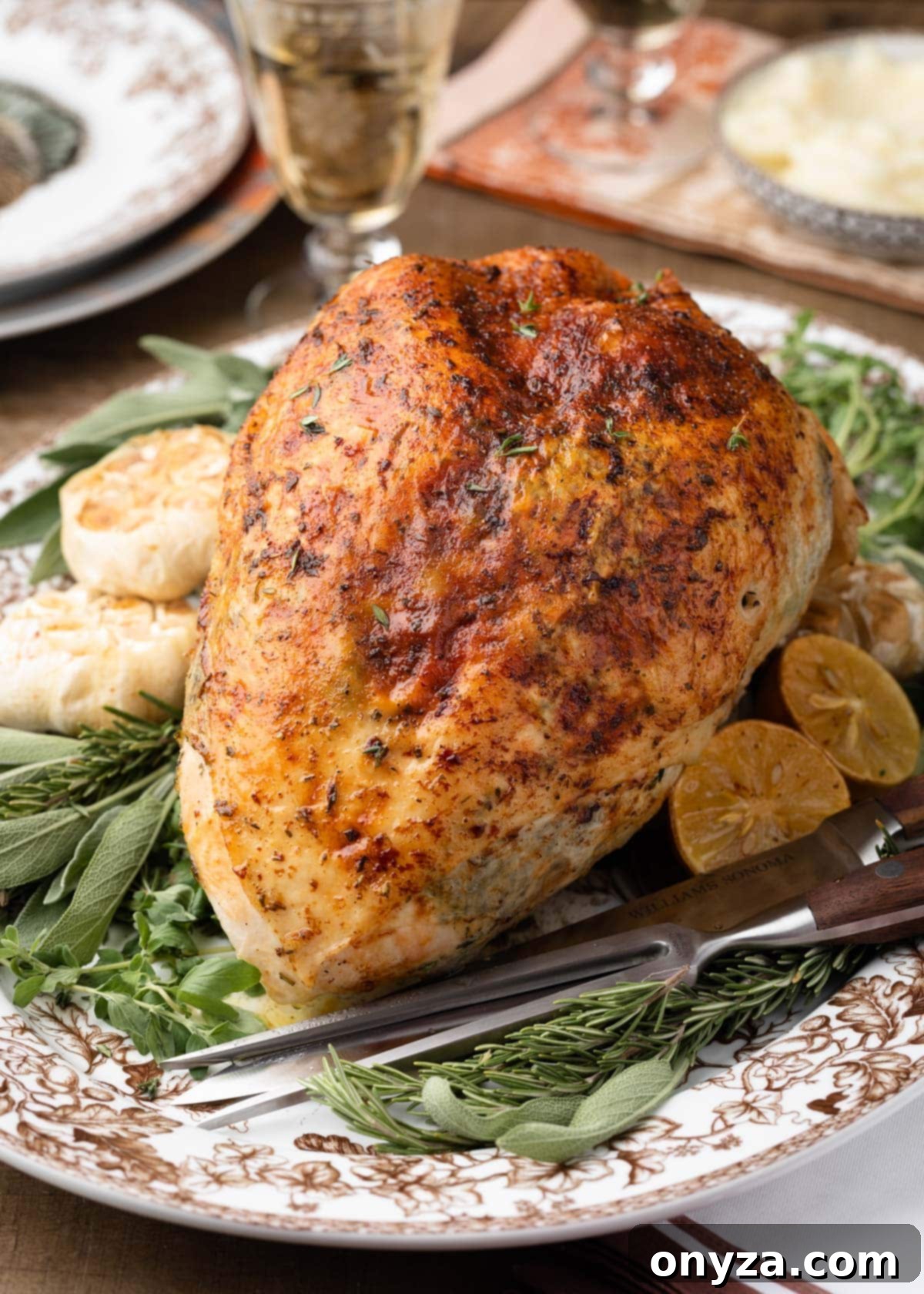Juicy Herb-Roasted Turkey Breast: The Perfect Centerpiece for Any Holiday
This exquisite Herb-Roasted Turkey Breast, infused with aromatic garlic-herb compound butter, promises a succulent, flavorful experience and makes a truly beautiful centerpiece for any festive dinner table. Ideal for holidays and special occasions, this recipe delivers impressive results with less fuss than a whole bird.
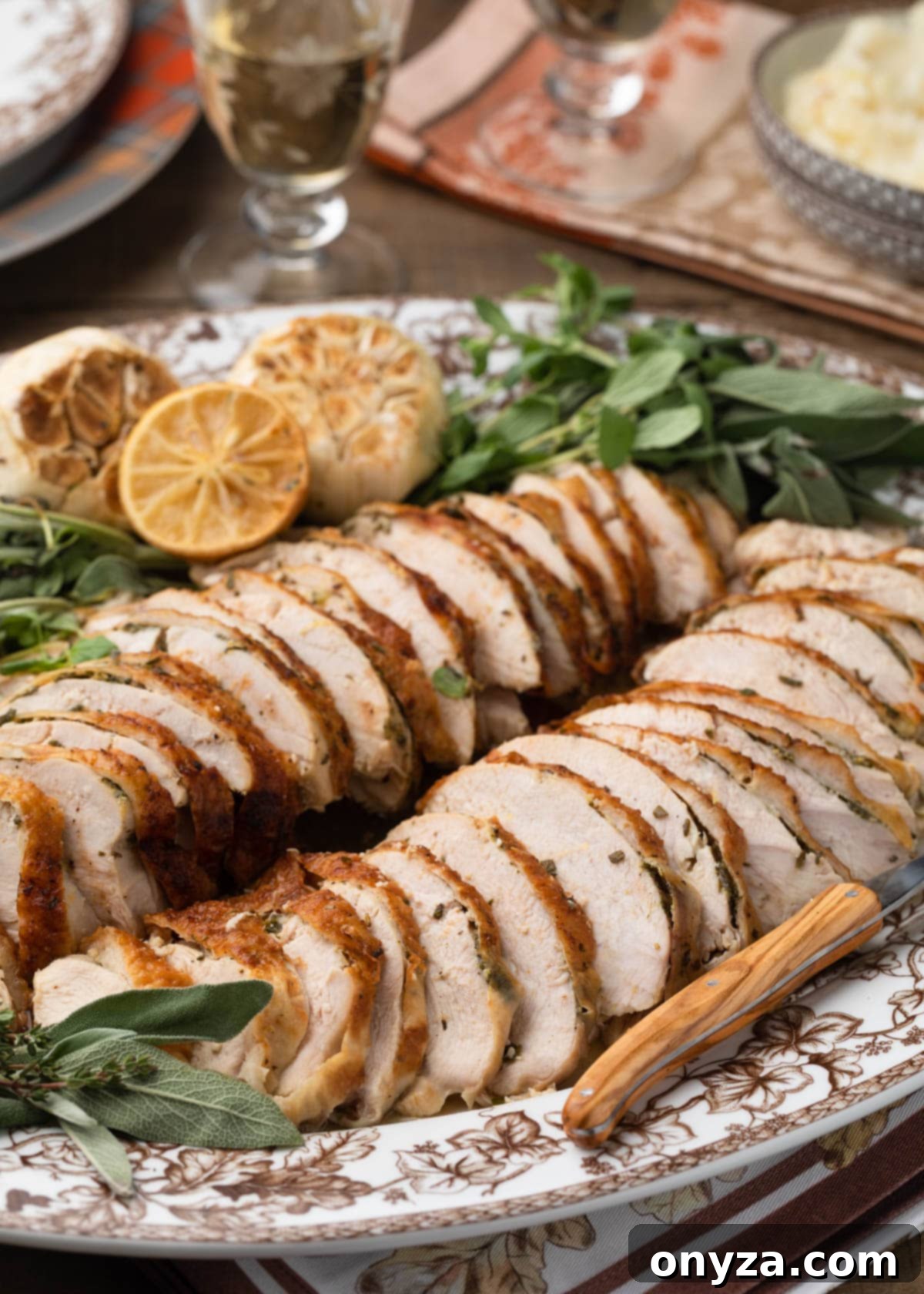
When planning a holiday meal or an impressive dinner for a smaller gathering, preparing a whole turkey can often feel excessive. That’s where a perfectly roasted turkey breast shines. It’s an excellent choice for Thanksgiving, Christmas, Easter, or any occasion where you desire the magnificent taste of turkey without the commitment of a large bird. This recipe focuses on maximizing flavor and moisture, ensuring every bite is as delicious as it looks.
Beyond its suitability for intimate dinners, a roasted turkey breast is also a fantastic supplementary option when hosting a larger feast and requiring additional white meat. Furthermore, it’s a strategic way to guarantee you’ll have delicious leftovers. Imagine transforming the succulent meat into comforting Turkey Tetrazzini or a rich Creamy Turkey Wild Rice Soup!
This particular Herb-Roasted Turkey Breast recipe has become a cherished favorite within our family, lauded for its exceptional juiciness and robust flavor. Here, we’ll guide you through a comprehensive tutorial, covering everything from selecting the best turkey breast at the market to presenting it beautifully on your table.
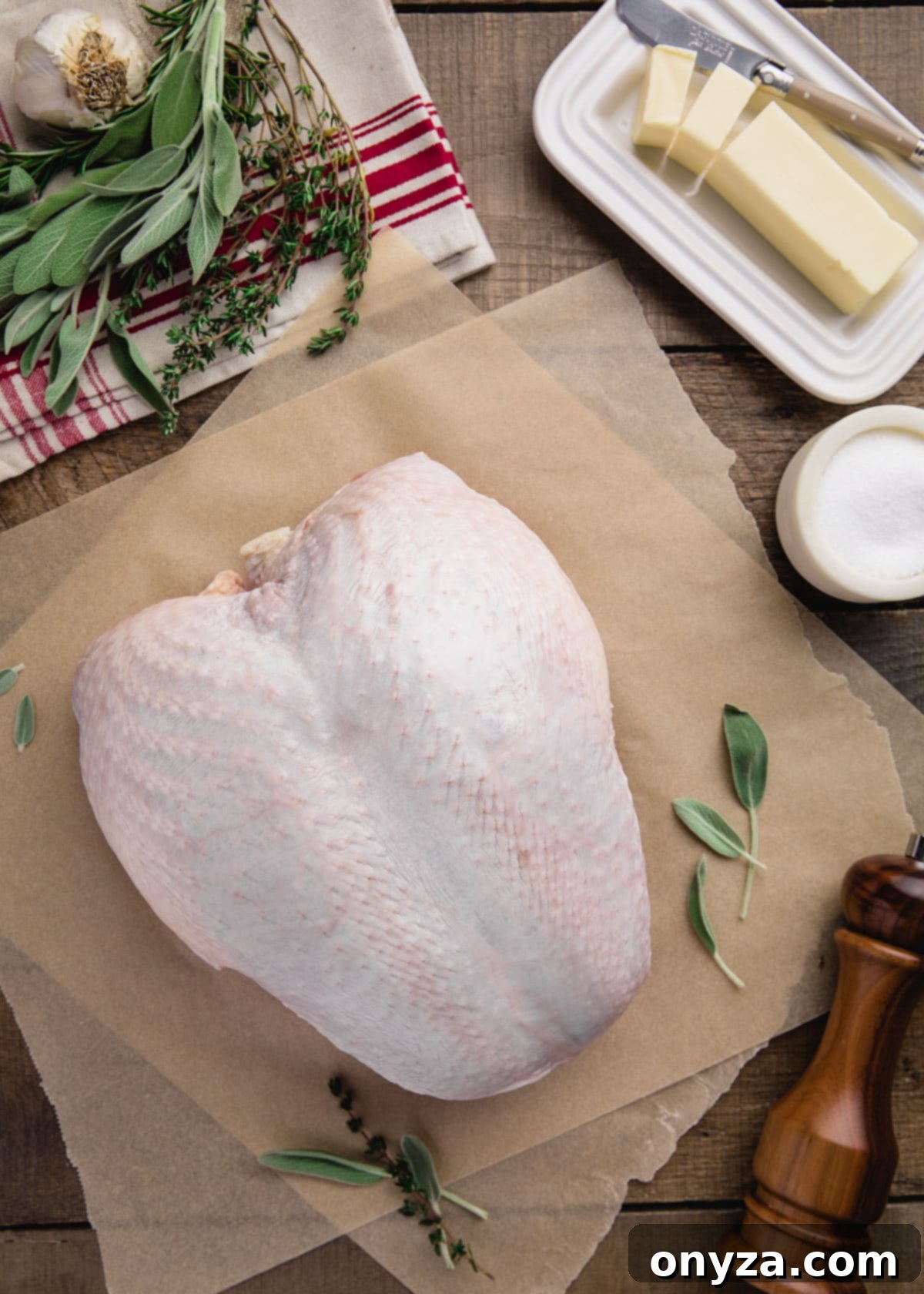
Selecting the Perfect Turkey Breast: A Guide to Market Choices
For optimal roasting results, we highly recommend selecting a whole, bone-in, skin-on turkey breast. A size between 6 and 7 pounds is typically ideal for this recipe. As a general guideline for portioning, plan on approximately 1 pound per person. If you’re hoping for ample leftovers, which we always do, increase that to 1-1/2 pounds per person. For our household, a 6-7 pound turkey breast comfortably serves 4 to 5 guests with plenty to spare for future meals.
Turkey breast meat is notoriously lean and can be prone to drying out during cooking. This is precisely why buying a breast that is on the bone with the skin intact is crucial. The bone helps conduct heat more evenly, contributing to a more consistent cook, while the skin acts as a protective layer, basting the meat in its own juices and the compound butter, ensuring a wonderfully moist and juicy roast. You’ll find turkey breasts sold either as a whole breast (both halves attached by the bone) or as larger half breasts. Either option works perfectly for this recipe, provided they are bone-in and skin-on.
Shopping Tip: Most well-stocked grocery stores will carry whole turkey breasts leading up to major holidays like Thanksgiving, Christmas, and Easter. If you don’t immediately spot them in the poultry section, don’t hesitate to inquire with your local butcher. Many butchers are willing to place a special order for you or even break down a whole turkey to provide just the breast. This also gives you the opportunity to use the legs, wings, and giblets to create your own flavorful homemade turkey stock.
Understanding Turkey Labels: Natural, Kosher, or Injected?
When purchasing your turkey breast, it’s vital to pay close attention to the labeling. Different processing methods can significantly impact the bird’s natural salinity and moisture content. If your turkey breast is marked as “kosher,” “self-basting,” or “brine injected,” it means the meat has already been treated with salt or a saline solution. In such cases, you will need to carefully adjust the amount of salt added to your recipe to avoid an overly salty dish. Natural turkeys, on the other hand, have not been pre-salted or injected with any solutions, offering you complete control over the seasoning.
For a deeper dive into the distinctions between various turkey types available at the market, including natural, kosher, and injected varieties, we recommend reading “Turkey Talk: Natural, Kosher, or Injected?” from Serious Eats. Understanding these differences can greatly influence your cooking approach and the final flavor of your roasted turkey breast.
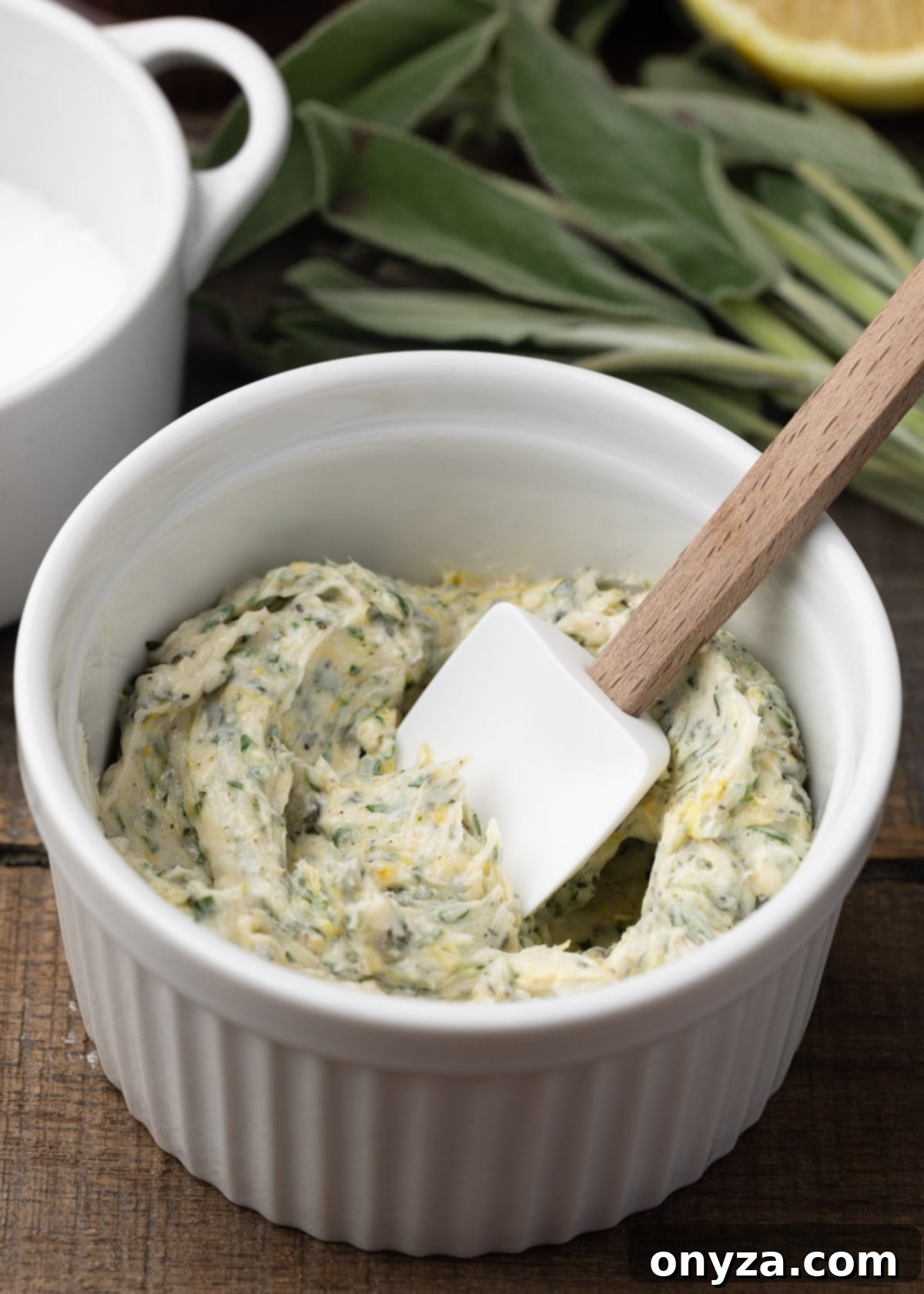
Crafting the Perfect Herb-Roasted Turkey Breast
Achieving a succulent and evenly cooked turkey breast begins even before it enters the oven. Similar to my preferred Roasted Chicken method, I always recommend allowing the turkey breast to sit out at room temperature (around 70 degrees F) for approximately one hour prior to roasting. This simple step helps the meat cook more uniformly, preventing the exterior from drying out while the interior catches up.
For roasting, a sturdy roasting pan fitted with a rack is essential. The rack elevates the turkey, promoting excellent air circulation around all sides, which encourages even browning and crisp skin. Adding a touch of liquid to the bottom of the pan—a mixture of dry white wine and chicken or turkey stock—serves multiple purposes. It helps to create a moist environment, further contributing to the juiciness of the meat, and it significantly reduces smoking by catching any flavorful drippings before they burn.
The Magic of Garlic-Herb Compound Butter
Compound butter is a true culinary secret weapon, especially for infusing flavor and moisture into leaner meats like chicken or turkey breast, which can sometimes veer towards the drier or blander side. For this cherished recipe, we harness the power of a classic combination of fresh herbs that evoke the quintessential aromas of a holiday feast: fragrant fresh sage, earthy rosemary, delicate thyme, and bright parsley.
To elevate this herb blend, we incorporate a subtle yet impactful punch of flavor with garlic powder, onion powder, and finely grated lemon zest. Through numerous iterations of this recipe over the years, we’ve found that raw garlic can sometimes be a bit too overpowering for the delicate balance of Thanksgiving flavors. Opting for garlic powder provides a more mellow, integrated garlic note. However, if you possess a strong affinity for garlic and desire a more pronounced flavor, feel free to substitute 1-2 large fresh garlic cloves for the powder. When using fresh garlic, ensure it’s either pressed through a garlic press or finely grated on a microplane to ensure even distribution and prevent large, bitter pieces.
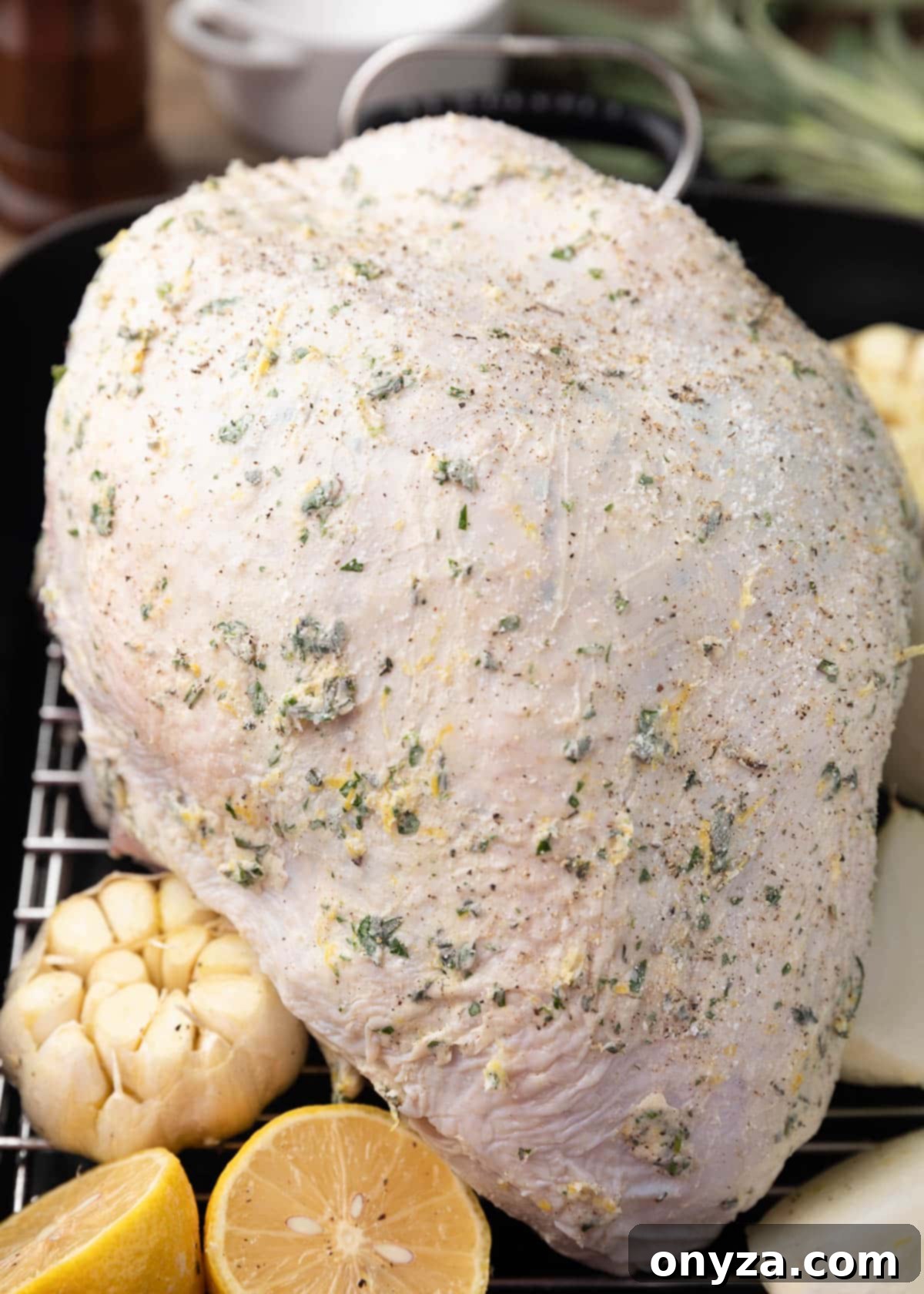
Mastering the Art of Butter Application Under the Skin
Properly applying the compound butter is paramount to achieving a truly juicy and flavorful turkey breast. Begin by positioning the turkey breast with the top facing you. Very gently, slide your fingers between the skin and the meat, carefully loosening the skin to create a generous pocket. The goal here is to create space for the butter without detaching the skin entirely. It is critically important not to tear the skin during this process, as any tears will cause the precious herb butter to melt out into the pan prematurely, rather than basting the meat from underneath. Strive to keep the skin attached along the sides and bottom of the breast to ensure the butter remains contained and melts slowly into the meat.
Once the pocket is formed, use a spoon to carefully distribute about two-thirds of the prepared compound butter evenly between the two breast halves, directly under the loosened skin. After placing the butter, use your hands to gently rub the outside of the skin. This action helps to further distribute the butter evenly across the breast meat from underneath, ensuring every part of the turkey benefits from the flavorful infusion.
Seasoning and Roasting to Perfection
Before the turkey breast makes its grand entrance into the oven, ensure the exterior skin is thoroughly dry. Use paper towels to pat it down meticulously; a dry surface is key for the remaining herb butter to adhere properly and for the skin to crisp beautifully. Once dry, rub the last third of the compound butter generously all over the skin. Finish with a liberal seasoning of kosher salt and freshly ground black pepper, and your turkey is now ready for its transformation.
Our roasting process begins with a powerful 30-minute blast in a 425 degrees F oven. This initial high heat is critical for several reasons: it jump-starts the cooking process, helps to render some of the fat under the skin, and, most importantly, encourages the development of that coveted, beautifully golden-brown and crispy skin that is the hallmark of a perfectly roasted turkey.
After the initial high-heat period, reduce the oven temperature to 325 degrees F. At this point, I like to pour a little white wine directly over the turkey breast, adding another layer of flavor and contributing to the pan drippings. The beauty of this method is that the turkey breast will only require occasional basting – perhaps a couple of times throughout the remainder of the roasting period – to achieve succulent, juicy perfection. This lower temperature ensures the interior cooks gently and evenly without drying out the exterior.
Chef’s Tip: To infuse even more flavor into your pan drippings and provide a beautiful garnish, consider roasting a few garlic heads (sliced horizontally to expose cloves and drizzled with olive oil), lemon halves, and a quartered onion in the roasting pan around the turkey. These aromatics will enrich the pan juices and can be used to elegantly adorn your platter when serving. This step is entirely optional but highly recommended for an added touch of culinary artistry.
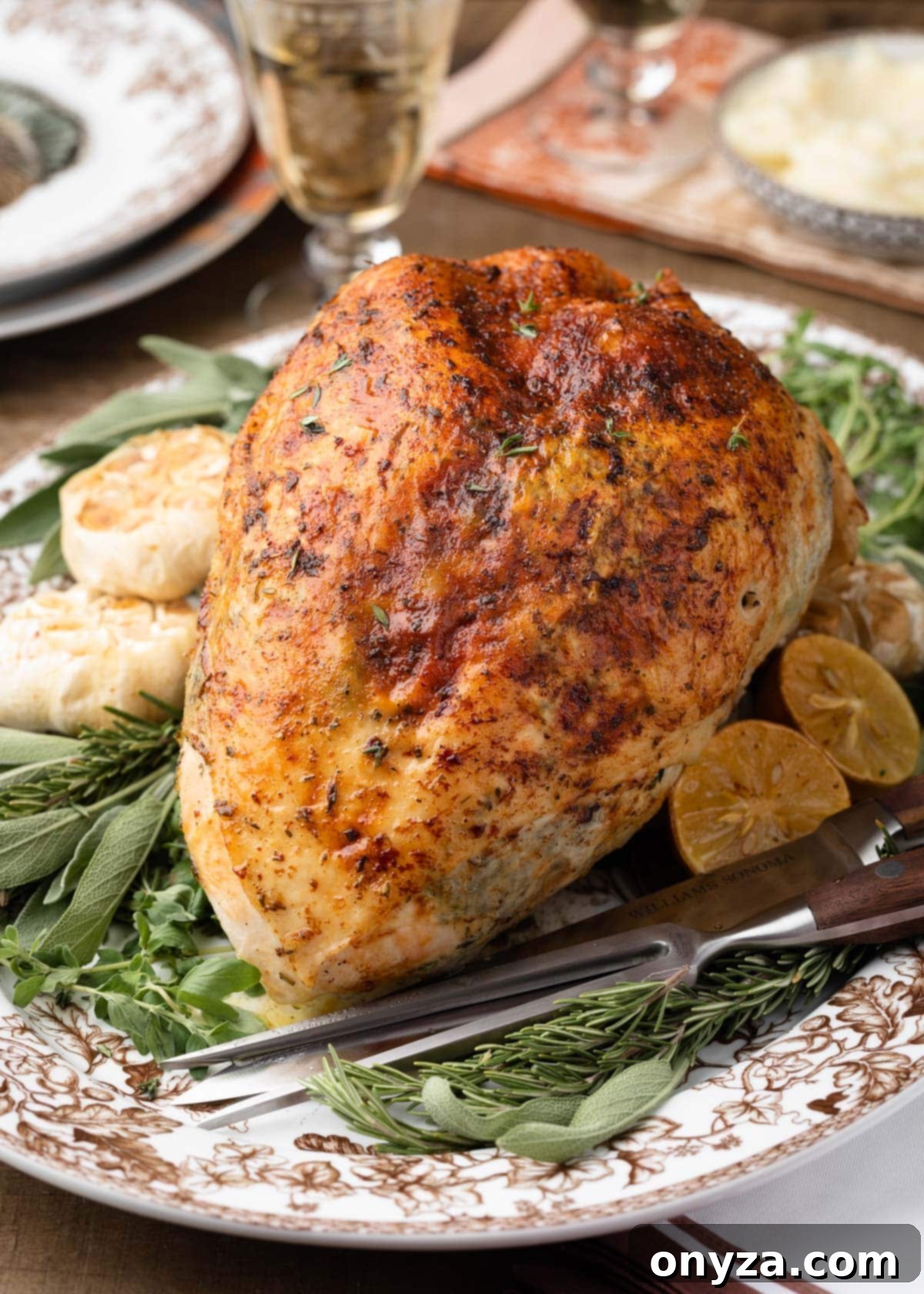
Ensuring Doneness and the Importance of Resting
Knowing precisely when your turkey breast is cooked to perfection is crucial for both safety and optimal texture. To accurately gauge its temperature, insert an instant-read thermometer into the thickest part of the meat, being careful to avoid touching the bone. The bone conducts heat differently and can give a false reading. When fully cooked, the thermometer should register 160 degrees F. I always recommend probing in a couple of different spots to confirm an even temperature throughout the breast.
The total roasting time after the initial 30-minute high-heat burst can vary significantly, ranging anywhere from 60 minutes to over 90 minutes. This variability depends on several factors, including the precise size and initial temperature of your turkey breast, as well as the calibration and efficiency of your oven. Always trust your thermometer over estimated cooking times.
Once the turkey breast reaches 160 degrees F, remove it from the oven and transfer it to a carving board. This next step is perhaps the most critical for a juicy result: let the turkey rest undisturbed for about 15 to 20 minutes. During this resting period, a phenomenon known as “carryover cooking” occurs, where the internal temperature of the meat will continue to rise to the FDA’s recommended safe internal temperature for poultry, which is 165 degrees F. More importantly, resting allows the meat fibers to relax and reabsorb their juices, ensuring that when you carve, those precious liquids remain within the meat, resulting in an incomparably moist and tender turkey.
Dinner is Served! Expert Plating and Delicious Side Pairings
Once rested, your magnificent herb-roasted turkey breast is ready for carving. Using a sharp carving knife, carefully detach each breast half from the central breastbone and the ribcage. After separating the breast meat, slice it against the grain into uniform, thin slices. Slicing against the grain is essential for tenderness, as it shortens the muscle fibers, making each bite easier and more pleasant to chew.
For a beautiful presentation, I like to arrange the fanned, sliced breast halves elegantly onto a large serving platter and garnish generously with fresh herbs. This adds a vibrant touch of color and reinforces the delicious herbal aromas. If you wish to enhance the turkey with a savory sauce, don’t let those flavorful pan drippings go to waste! Deglaze the roasting pan with about 1/2 cup of chicken or turkey stock, gently scraping up any browned bits from the bottom. Strain the pan juices through a fine-mesh sieve, season them to taste with a pinch of salt and pepper, and then spoon this rich, homemade sauce over the turkey slices just before serving. It’s a simple step that adds incredible depth of flavor.
Delightful Side Dishes to Complement Your Turkey Breast
No holiday meal is complete without an array of delectable side dishes. Here are some of our favorite pairings that beautifully complement the rich flavors of this Herb-Roasted Turkey Breast:
- Haricots Verts with Lemon-Herb Brown Butter Sauce: Crisp green beans with a nutty, zesty dressing.
- Cranberry Pecan Stuffing: A sweet and savory stuffing with a delightful crunch.
- Traditional Bread Stuffing with Herbs: The classic, comforting staple for any turkey dinner.
- Sausage and Chestnut Stuffing: A hearty and flavorful stuffing option.
- Brown Butter Whipped Sweet Potatoes: Creamy, sweet, and incredibly indulgent.
- Cream Cheese Mashed Potatoes: Extra rich and smooth mashed potatoes for a luxurious feel.
- Brandied Cherry Cranberry Sauce: A sophisticated twist on traditional cranberry sauce.
- Parmesan Duchess Potatoes: Elegant, piped potato swirls with a cheesy flavor.
Recipe: Herb Roasted Turkey Breast
This detailed recipe provides all the steps to create a show-stopping herb-roasted turkey breast, perfect for any special occasion or a smaller holiday gathering. It focuses on infusing flavor and retaining moisture for a truly succulent result.
Herb Roasted Turkey Breast
by Amanda Biddle
This juicy roasted turkey breast with herb compound butter is a beautiful alternative to a whole turkey for a holiday dinner.
Prep Time: 1 hour 30 minutes
Cook Time: 2 hours
Total Time: 3 hours 30 minutes
Servings: 5 to 7 guests (4 to 5 if you want leftovers)
Ingredients
- 6 to 7 pound whole, bone-in turkey breast (defrosted)*
- 8 tablespoons unsalted butter, softened to room temperature
- 1 tablespoon chopped fresh parsley
- 2 teaspoons chopped fresh thyme
- 2 teaspoons chopped fresh sage
- 1 teaspoon chopped fresh rosemary
- 2 teaspoons finely-grated lemon zest
- 1 teaspoon garlic powder (OR 1-2 large garlic cloves, pressed in a garlic press or grated on a microplane**)
- ½ teaspoon onion powder
- ½ cup chicken stock, turkey stock, or water
- 1 cup dry white wine, divided
- kosher salt and black pepper
Instructions
- Allow the turkey breast to sit at room temperature (70 degrees F) for an hour before roasting. Trim any excess skin. Preheat your oven to 425 degrees F. Place a flat or V-rack in a large roasting pan.
- In a small bowl, stir together the softened butter, chopped fresh herbs (parsley, thyme, sage, rosemary), lemon zest, garlic powder (or fresh garlic, if using), onion powder, ¾ teaspoon kosher salt, and ¼ teaspoon black pepper until thoroughly combined.
- Gently use your fingers to loosen the skin from the turkey meat, creating a pocket over each breast half. Be careful not to tear the skin. Using a spoon, divide two-thirds of the prepared herb butter and carefully place it under the loosened skin, distributing it over the breast meat. Press on the outside of the skin to help spread the butter evenly.
- Pat the entire exterior of the turkey breast completely dry with paper towels. Rub the remaining herb butter all over the skin. Season the breast generously with additional kosher salt and freshly ground black pepper.
- Place the seasoned turkey breast on the rack in the roasting pan. Pour ½ cup chicken/turkey stock (or water) and ½ cup of the dry white wine into the bottom of the roasting pan.*
- Roast for 30 minutes at 425 degrees F. After 30 minutes, remove the pan from the oven, pour the remaining ½ cup of white wine over the top of the turkey breast, and reduce the oven temperature to 325 degrees F. Continue roasting until an instant-read thermometer inserted into the thickest part of the meat (avoiding the bone) registers 160 degrees F. This can take anywhere from 60 to 90+ minutes, depending on your oven and the size of the turkey breast. Baste the turkey occasionally with the pan juices to keep it moist, and if the skin begins to brown too quickly, loosely tent it with aluminum foil.
- Once the turkey reaches 160 degrees F, remove it from the oven and transfer it to a carving board. Let it rest for 15-20 minutes before carving. During this resting period, the internal temperature will rise to 165 degrees F, ensuring a perfectly cooked and juicy turkey. Carve against the grain and serve immediately.
Notes
- *If you are using a brined, self-basting, or kosher turkey breast, significantly reduce the salt in the butter mixture to about ¼ teaspoon, and use a very light hand when sprinkling salt on the outside of the skin. These turkeys are pre-salted.
- If your turkey breast comes with a pop-up timer, do not rely on it. Always use a reliable instant-read thermometer for accurate doneness.
- **Garlic powder generally provides a milder garlic flavor compared to fresh cloves. If you prefer a more pronounced garlic taste, substitute 1-2 large fresh garlic cloves, finely pressed or grated, for the powder.
- ***For added flavor and a beautiful garnish, you can nestle two large peeled, quartered onions, a few lemon halves, and a few heads of garlic (with the tops trimmed to expose the cloves, drizzled lightly with olive oil) around the turkey breast in the roasting pan. The roasted lemons and garlic make excellent garnishes, and roasted garlic is delicious spread on crusty bread!
Nutrition Estimate
Nutrition information is automatically calculated, so should only be used as an approximation.
- Serving: 0.2 recipe
- Calories: 764 kcal
- Carbohydrates: 6g
- Protein: 90g
- Fat: 41g
- Saturated Fat: 19g
- Cholesterol: 290mg
- Sodium: 827mg
- Potassium: 41mg
- Fiber: 1g
- Sugar: 1g
- Vitamin A: 665 IU
- Vitamin C: 4mg
- Calcium: 16mg
- Iron: 1mg
About our recipes: Please note that our recipes have been developed using the US Customary measurement system and have not been tested for high altitude/elevation cooking and baking.
We hope this comprehensive guide inspires you to create a truly memorable Herb-Roasted Turkey Breast for your next special meal. Its rich flavors and tender texture are sure to impress your guests and satisfy your family. Enjoy the process and the delicious results!
This post was originally published on Striped Spatula on November 25, 2019, and was updated in 2020 with new photos and expanded content to provide even more helpful tips and details.
